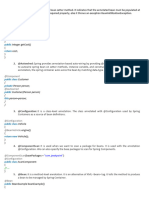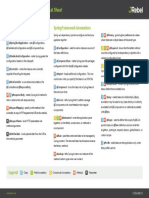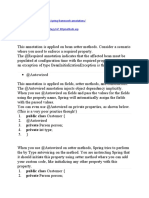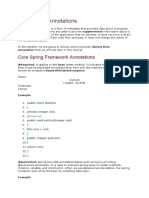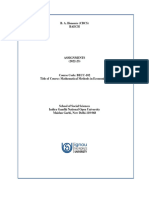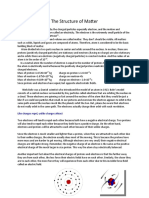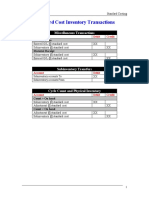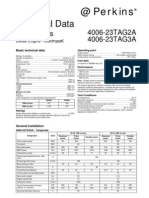0% found this document useful (0 votes)
39 views12 pagesSpring Annotations
The document provides a comprehensive overview of Java annotations essential for modern development, particularly within the Spring framework. It covers various annotations related to component scanning, dependency injection, configuration, scheduling, AOP, Spring Boot, MVC, exception handling, microservices, messaging, caching, security, data management, testing, transactions, and validation. Each section details specific annotations and their purposes, emphasizing their importance in building scalable and efficient applications.
Uploaded by
20A144 TIWARI NIRAJ RAVISHANKERCopyright
© © All Rights Reserved
We take content rights seriously. If you suspect this is your content, claim it here.
Available Formats
Download as PDF, TXT or read online on Scribd
0% found this document useful (0 votes)
39 views12 pagesSpring Annotations
The document provides a comprehensive overview of Java annotations essential for modern development, particularly within the Spring framework. It covers various annotations related to component scanning, dependency injection, configuration, scheduling, AOP, Spring Boot, MVC, exception handling, microservices, messaging, caching, security, data management, testing, transactions, and validation. Each section details specific annotations and their purposes, emphasizing their importance in building scalable and efficient applications.
Uploaded by
20A144 TIWARI NIRAJ RAVISHANKERCopyright
© © All Rights Reserved
We take content rights seriously. If you suspect this is your content, claim it here.
Available Formats
Download as PDF, TXT or read online on Scribd
/ 12



















